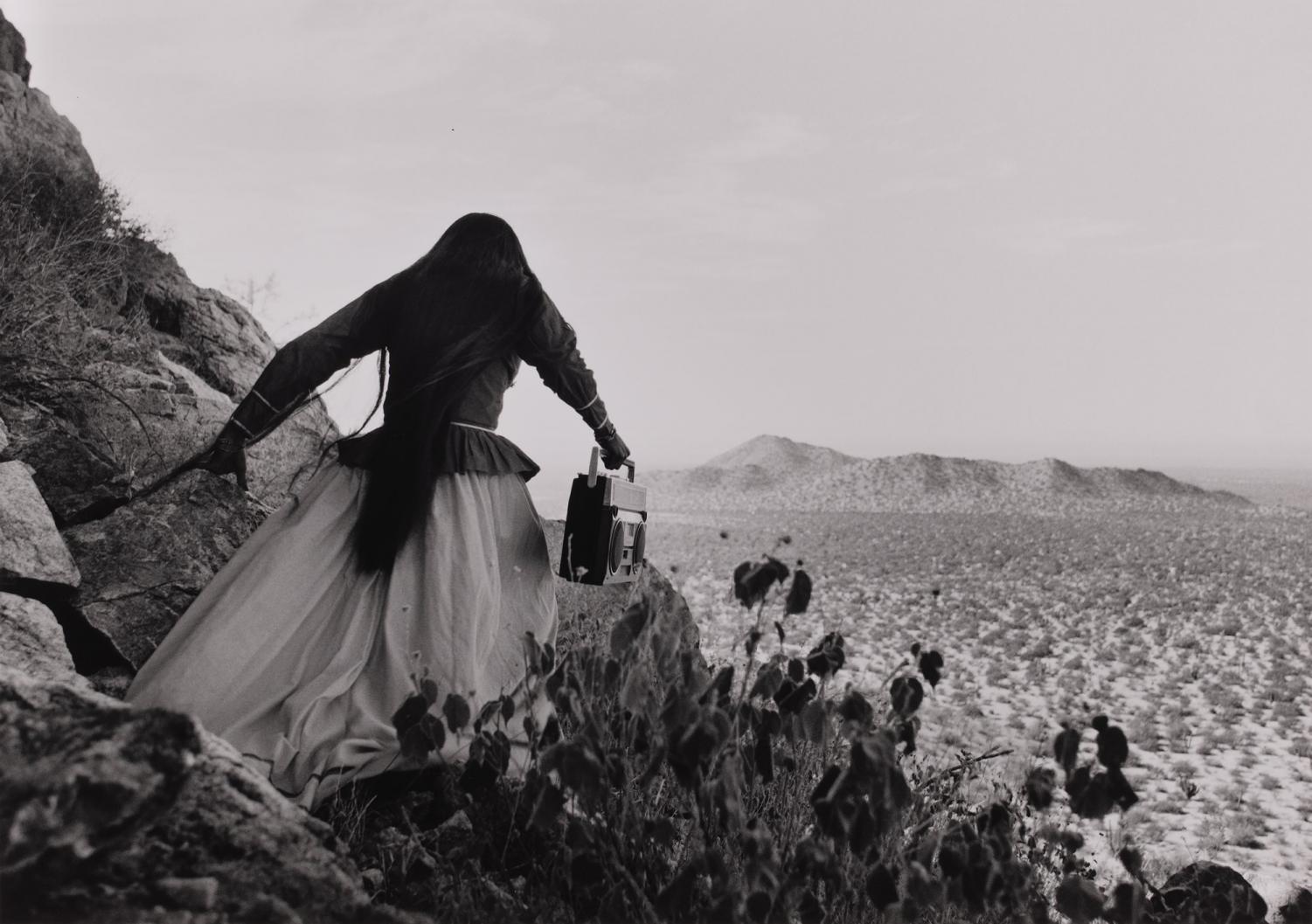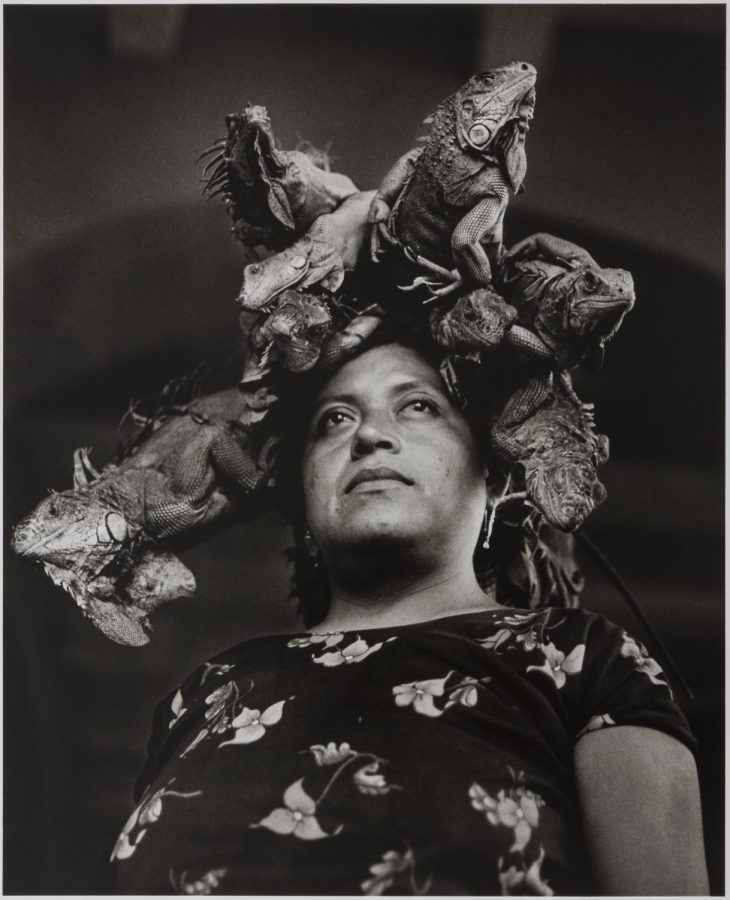Iturbide photography explores Mexican culture and community
Nuestra Señora de las Iguanas (Our Lady of the Iguanas) by Graciela Iturbide (Daniel Greenberg and Susan Steinhauser. © Graciela Iturbide. Courtesy, Museum of Fine Arts, Boston.)
September 26, 2019
A sky filled with birds. A woman balancing iguanas on her head. Slaughtered goats in a town square. There’s a sense of surrealism in the photographs hanging on the walls in Graciela Iturbide’s “México,” the new photography exhibit at the Minneapolis Institute of Art (Mia).
“I always shoot what surprises me,” photographer Graciela Iturbide says in an interview filmed and published by the Museum of Fine Arts, Boston (MFAB).
Born and raised in México City, Iturbide studied photography and worked alongside the established Mexican photographer Manuel Alvarez Bravo. She was greatly influenced by his work, as well as his style of taking photographs. From him, she learned that photography takes time and should be guided by intuition.
“Generally, I shoot what I see. Nothing more… My eye sees it, and my heart shoots it,” Iturbide said in the MFAB interview.
The exhibit is divided into eight thematic sections. Some are still lifes of nature and cities. Others focus around the people of different places, such as the women of Oaxaca or the Indigenous Seri people of the Sonoran Desert. Themes of life, death and celebration tie together the whole exhibit.
Alongside the photographs, the exhibit includes some complete contact sheets from her photoshoots. Most of the sheets have Iturbide’s pen marks, and museum goers are allowed a behind-the-scenes look into the photographer’s decision process. All her photographs are in black and white because she believes “reality is in black and white.” Her choice to avoid color is strange, and Mexican culture often celebrates bright colors. However, the black and white portraits allow the audience to focus on the subject of each photo without any distraction.
Iturbide’s work explores not only the livelihood of México, but the relationship between a photographer and the subject. In her interview with the MFAB, Iturbide recounted both using the camera to distance herself from trauma and using her camera to heal from grief. After the passing of her daughter, Iturbide turned to her camera. For that reason, the public can sense a theme of death throughout the gallery: sobering photos of a family burying a small casket, photos of the Day of the Dead decorations in México City and angelic portraits of Indigenous women.

Graciela Iturbide (Elizabeth and Michael Marcus. © Graciela Iturbide. Courtesy, Museum of Fine Arts, Boston.)
Additionally, Iturbide took care in building relationships with the Indigenous communities she photographed, living with and building respect and trust before taking their portraits. Iturbide purposefully uses shorter focal length to take portraits, which forces her to be close to her subject and ask for their consent.
“They need to know I’m a photographer and give me permission,” Iturbide said to MFAB.
The exhibit was organized by Kristen Gresh, the senior curator of photography at the MFAB. Photographs on display are from the MFAB, as well as other private collections and from the artist herself. As soon as Casey Riley, head of the Department of Photography and New Media, learned about the exhibit in Boston, she proposed that Mia host the show next.
“I’m so glad that I did — the reception from our audiences has been very positive and it has provided new ways for us to engage with the communities that surround and support our museum,” Riley said.
“Every image is a reflection of her efforts to connect with the people, landscapes — even the animals — of Mexico, and her profound connection with the challenges and joys they experienced,” Riley said.
Graciela Iturbide’s México will be at Mia until Dec. 15 in the Harrison Photography Gallery.













